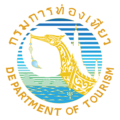A Deeper Look into Phang Nga: Culture, Traditions, and Local Stories

Beyond the limestone karsts and pristine beaches that have made Phang Nga famous lies a rich cultural tapestry woven from diverse traditions, fascinating history, and the stories of its resilient people. While most travelers come for the natural beauty, those who take time to explore the province’s cultural dimensions discover an even more rewarding experience.
As someone who has spent years connecting with local communities throughout Phang Nga, I’ve found that understanding the province’s cultural identity adds profound depth to any visit. From ancient indigenous practices to the influence of Chinese tin miners, from Muslim fishing communities to contemporary Thai Buddhist traditions, Phang Nga’s cultural landscape is as varied as its natural one.
The Cultural Melting Pot of Phang Nga
Phang Nga’s strategic location on the Andaman coast has made it a crossroads of cultures for centuries. Various groups have settled here, each adding distinctive elements to the province’s identity:

The Sea Gypsies: Phang Nga’s First Inhabitants
Long before tourism or even the establishment of modern Thailand, the Moken (or “sea gypsies”) navigated the Andaman waters, living nomadic lives aboard their traditional kabang boats. Today, small Moken communities can still be found in Phang Nga, particularly around the Surin Islands.
The Moken possess extraordinary knowledge of the sea, including the ability to free-dive to remarkable depths and an intimate understanding of marine ecosystems. Their traditional animist beliefs center around respect for the ocean and its spirits, with rituals designed to maintain harmony with their environment.
What makes the Moken culture particularly significant in Phang Nga is their predictive understanding of natural phenomena. Before the devastating 2004 tsunami, many Moken recognized the warning signs and moved to higher ground, saving countless lives by sharing their knowledge with others.
While their traditional nomadic lifestyle has been largely restricted by modern national boundaries and marine park regulations, efforts are being made to preserve Moken cultural practices and language. Visitors can respectfully learn about Moken traditions through community-based tourism initiatives that support cultural preservation.
Chinese Heritage: The Tin Mining Legacy
The discovery of tin in the 19th century brought waves of Chinese immigrants to Phang Nga, transforming both the landscape and culture of the region. Many of today’s prominent local families trace their ancestry to these hardworking miners who eventually established themselves as merchants and community leaders.
This Chinese influence is most visible in Takua Pa’s Old Town, where rows of Sino-Portuguese shophouses tell the story of prosperity built on tin. During the annual Vegetarian Festival (typically held in September or October), these Chinese roots emerge in dramatic fashion with spirit medium processions, vegetarian food offerings, and spectacular acts of devotion that differ from the more well-known Phuket celebrations with their own unique local practices.
The Chinese influence on Phang Nga’s culinary traditions is particularly notable. Dishes like mee Hokkien (noodles prepared in the Fujian style), o-aew (a unique jelly dessert made from banana starch), and moo hong (five-spice stewed pork) reflect the Peranakan culture – the distinct identity formed when Chinese immigrants married into local families.
The Muslim Maritime Communities
Along Phang Nga’s coast and islands, particularly in the southern regions, Muslim communities have maintained distinctive traditions for generations. These communities, many with ancestral connections to Malaysia, have traditionally made their living from fishing and coastal trade.
The floating village of Koh Panyee represents one of the most remarkable adaptations of Islamic culture to Phang Nga’s unique geography. Built entirely on stilts over shallow water near a towering limestone island, this village of several hundred residents includes a mosque, school, floating football pitch, and numerous seafood restaurants.
Muslim influences are evident in Phang Nga’s southern cuisine, with dishes featuring turmeric, cumin, and other spices not commonly found in central Thai cooking. The region’s roti, massaman curry, and satay reflect this cultural fusion, offering flavors distinct from those found elsewhere in Thailand.
The province’s Muslim communities also maintain traditional boat-building techniques, crafting long-tail boats by hand using methods passed down for generations. These distinctively painted vessels remain essential to coastal livelihoods and have become iconic symbols of the Andaman seascape.
Thai Buddhist Traditions
Buddhism provides the spiritual foundation for many of Phang Nga’s cultural practices, with temples serving as centers for both religious and community life. The province’s most revered Buddhist sites often incorporate natural features into their sacred spaces – most dramatically at Wat Suwan Kuha, where a reclining Buddha rests within a limestone cave.
Phang Nga’s annual festival calendar follows the Buddhist lunar calendar, with Songkran (Thai New Year in April) and Ok Phansa (the end of Buddhist Lent in October) being particularly important celebrations. During these times, temples host merit-making ceremonies, community meals, and traditional entertainment including likay folk theater and shadow puppet performances.
The tradition of monk ordination remains strong in rural Phang Nga communities, with most young men spending at least a brief period in monastic life. These ordination ceremonies bring entire villages together, with elaborate processions, feasting, and communal celebration.
Living Traditions: Cultural Practices That Endure
Beyond the influences of various cultural groups, specific traditions have shaped Phang Nga’s cultural identity and continue to play important roles in community life today:

Shadow Puppet Theater (Nang Talung)
Southern Thailand’s distinctive shadow puppet tradition, nang talung, preserves ancient stories through the art of manipulation. Puppeteers create intricate leather figures and project their shadows onto illuminated screens while narrating tales from Buddhist jatakas (birth stories of the Buddha), the Ramayana epic, and local folklore.
In Phang Nga, particularly around Takua Pa and rural districts, a few master puppeteers still maintain this tradition. Performances typically combine moral lessons with humor and social commentary, often addressing contemporary issues through ancient character archetypes.
What makes Phang Nga’s shadow puppet tradition unique is how it incorporates local historical events and characters, creating a living record of the region’s past. Some puppeteers have developed characters representing the various ethnic groups of the province – Chinese merchants, Muslim fishermen, and Buddhist farmers – who interact in stories reflecting local social dynamics.
While modernization threatens this art form, community efforts to preserve nang talung include school programs where young people learn traditional puppetry techniques from recognized masters.
Traditional Batik Making
In Phang Nga’s southern communities, particularly those with Malaysian influence, artisans practice the ancient art of batik – creating intricate designs on fabric using wax-resist dyeing. The province’s batik tradition features distinctive patterns inspired by the natural environment, including marine life and limestone formations.
Unlike the geometric patterns common in Malaysian batik or the more flowery Javanese styles, Phang Nga’s batik often incorporates narrative elements depicting local legends or daily life scenes. Artisans use natural dyes derived from plants like indigo, turmeric, and mangosteen peel, though chemical dyes have become more common in commercial production.
In villages near Thai Mueang and Kapong districts, visitors can find family workshops where batik techniques have been passed down through generations. Some community cooperatives offer hands-on learning experiences where visitors can create their own batik pieces under the guidance of master artisans.
Traditional Fishing Practices
While industrial fishing has transformed much of Thailand’s fishing industry, some Phang Nga communities maintain traditional, sustainable fishing methods that reflect centuries of accumulated knowledge about local marine ecosystems.
In coastal villages, particularly those in more remote areas, fishermen still practice selective fishing using hand-crafted traps designed to catch specific species while allowing juveniles and non-target species to escape. The design and construction of these traps represent sophisticated ecological understanding developed over generations.
The tradition of ao phueak (squid trapping) during dark moon phases remains an important seasonal activity in many communities. Fishermen use specially designed lures and lights to attract squid, a practice that has remained largely unchanged for centuries despite technological advances in other fishing methods.
These traditional practices are increasingly recognized for their sustainability, with several communities developing eco-tourism initiatives that allow visitors to learn about and participate in traditional fishing expeditions.
Local Stories and Legends: The Narrative Heritage of Phang Nga
Every landscape holds stories, and Phang Nga’s dramatic natural features have inspired particularly rich narrative traditions. These local legends not only entertain but also convey cultural values and explain the distinctive geography of the region:

The Legend of Ko Tapu (James Bond Island)
While tourists know the distinctive limestone pinnacle in Phang Nga Bay as “James Bond Island” (from its appearance in “The Man with the Golden Gun”), locals call it Ko Tapu (Nail Island) and share a legend about its formation.
According to the story, a fisherman caught numerous fish using his magical blade but couldn’t find his way home due to treacherous waters. In frustration, he plunged his knife into the sea, breaking the blade. The handle became Ko Tapu, while the blade transformed into nearby Ko Mo (Knife Island).
Another version tells of a battle between a local fisherman and a sea dragon that had been terrorizing the area. When the fisherman finally defeated the creature, he drove his blade into the sea floor as a warning to other sea monsters. The exposed handle of this blade is said to be Ko Tapu.
These legends reflect the traditional animist beliefs that coexist with formal religion throughout the region, where natural features are often associated with supernatural beings or events.
The Pearl in the Navel: Tha Khun District’s Origin Story
In Thai, the province name “Phang Nga” is thought to derive from the Malaysian phrase “peng nga,” referring to a particular type of bamboo or, alternatively, meaning “pearl in the navel.” The latter interpretation connects to a popular local legend.
According to this story, a beautiful daughter of a local ruler became ill with a mysterious ailment that left her in constant pain. No healer could diagnose her condition until a wandering monk discovered a pearl growing in her navel. When the pearl was removed, it allegedly fell to the ground at the spot that would become Tha Khun district, giving the province its name.
While historically dubious, this tale reflects the region’s self-perception as a place of hidden treasures and natural abundance – themes that recur in many local stories.
The Tsunami Origin Myth
Following the 2004 tsunami that devastated Phang Nga’s coast, a new legend emerged blending traditional beliefs with the traumatic experience. According to this modern myth, the tsunami was caused by the disturbance of sacred underwater caves where naga (serpent deities) had dwelled for centuries.
The story claims that excessive development, particularly underwater blasting for construction, angered these powerful beings who sent the waves as punishment and warning. This narrative helped communities make sense of the tragedy within their existing belief framework while also carrying an environmental message about respecting natural systems.
What makes this story particularly significant is how it demonstrates the living nature of mythology – new legends continue to form and evolve in response to contemporary events, helping communities process shared experiences.
Cultural Festivals: Celebrating Phang Nga’s Heritage
The province’s cultural diversity is perhaps most visible during its various festivals, when communities come together to celebrate their heritage through ritual, food, performance, and communal activities:
Chao Ley (Sea Gypsy) Boat Floating Festival
Held during the full moon of the sixth and eleventh lunar months (usually in May and October), this Moken celebration involves crafting elaborate miniature boats from wood and banana stems. The boats are filled with hair, nail clippings, and symbolic objects representing illness or misfortune.
In a nighttime ceremony accompanied by traditional music and dance, the community launches these boats out to sea, symbolically carrying away bad luck and evil spirits. The ritual reflects the deep connection between the Moken people and the sea that has sustained them for generations.
What makes this festival particularly meaningful is its role in maintaining cultural identity for a community facing significant pressures from modernization. Young Moken participate in every aspect of preparation, ensuring traditional knowledge transfers to new generations.
Por Tor Festival (Hungry Ghost Festival)
In the seventh lunar month (usually August), Phang Nga’s Chinese communities observe Por Tor – a time when the barriers between the living and dead temporarily dissolve, allowing ancestors and hungry ghosts to roam the earthly realm.
Families prepare elaborate food offerings, burn special paper gifts, and create distinctive red turtle-shaped cakes (ang ku) that symbolize longevity and good fortune. Public shrines host communal offerings, traditional opera performances, and blessing ceremonies.
What distinguishes Phang Nga’s Por Tor celebrations from those in other provinces is the incorporation of local folklore and specific offerings related to the region’s mining history. Some families prepare symbolic miniature mining tools with their offerings to honor ancestors who worked in the tin industry.

Songkran in Phang Nga Style
While Songkran (Thai New Year) is celebrated throughout Thailand with water fights and cleansing rituals, Phang Nga communities maintain some distinctive traditions during this April festival.
In addition to the usual water play, Phang Nga’s celebrations include the “hiking Buddha” procession, where sacred Buddha images from various temples are paraded through communities, allowing people to pour lustral water over them for blessings. The parade route often connects multiple villages, symbolizing community unity.
Another unique aspect is the tradition of releasing small birds and fish during Songkran as an act of merit-making. While controversial from an environmental perspective, this practice reflects the Buddhist value of compassion for all living beings.
Cultural Preservation Efforts
As modernization and tourism transform Phang Nga, various initiatives seek to preserve and revitalize the province’s cultural heritage:
The Living Museum Movement
Several communities have established “living museums” that preserve traditional ways of life not as static displays but as functioning elements of contemporary community life. The Tai Dam Cultural Center in Kapong District showcases the heritage of an ethnic minority group that migrated from Laos, maintaining their distinctive architecture, crafts, and agricultural practices.
Unlike conventional museums, these centers involve community members demonstrating traditional skills, from rice farming to textile production, while adapting them to modern contexts. Visitors can participate in activities rather than merely observing artifacts.
Oral History Projects
Recognizing that much of Phang Nga’s cultural heritage exists in the memories and stories of elders, several community organizations have initiated oral history projects to record local knowledge before it disappears.
The Tsunami Memory Project particularly stands out, documenting not only experiences of the 2004 disaster but also how traditional knowledge and cultural practices contributed to community resilience and recovery. These narratives provide valuable insights for future disaster response while preserving an important chapter in the province’s history.
Culinary Heritage Preservation
Food serves as a powerful vessel for cultural memory, and efforts to document and preserve Phang Nga’s culinary traditions have gained momentum in recent years. Community cookbooks recording traditional recipes, cooking workshops led by village elders, and food festivals highlighting regional specialties all contribute to maintaining the province’s distinctive food culture.
The annual Phang Nga Food Heritage Festival in Takua Pa brings together cooks from different ethnic communities to showcase dishes that might otherwise be prepared only in private homes, introducing younger generations to the full diversity of local cuisine.
Experiencing Phang Nga’s Cultural Heritage as a Visitor
For travelers interested in moving beyond scenic views to deeper cultural understanding, several respectful approaches can provide meaningful connections to Phang Nga’s heritage:
Community-Based Tourism Initiatives
Several villages throughout Phang Nga have developed community-based tourism programs that allow visitors to experience local culture while ensuring economic benefits flow directly to residents. These initiatives typically involve homestays, craft demonstrations, cooking classes, and participation in everyday activities like fishing or farming.
The Ban Sam Chong Nuea community in Mueang district offers a particularly well-developed program where visitors can learn traditional fishing methods, explore mangrove ecology, and participate in seafood harvesting with local guides. What makes these experiences valuable is their authenticity – activities represent actual community practices rather than performances staged for tourists.
Cultural Workshops
For those seeking hands-on engagement with traditional practices, various workshops throughout the province offer opportunities to learn directly from master artisans:
- Batik making in Ban Thai Nam: Learn traditional wax-resist techniques and natural dyeing processes from artisans who have practiced this craft for generations.
- Shadow puppet crafting in Takua Pa: Create traditional nang talung puppets from cow hide under the guidance of one of the few remaining master puppeteers.
- Southern Thai cuisine in Kapong: Learn to prepare regional specialties using traditional techniques and local ingredients, with courses ranging from single dishes to comprehensive explorations of Southern Thai flavor principles.
Heritage Architecture Tours
The blend of architectural styles throughout Phang Nga tells the story of its diverse cultural influences. Self-guided or expert-led tours can help visitors “read” this built heritage:
- Takua Pa Old Town’s Sino-Portuguese row houses reflect the prosperity of Chinese tin merchants who settled in the region, with distinctive features including colorful tile work and unique five-foot walkways.
- Traditional Thai houses in rural districts demonstrate sophisticated adaptations to tropical climate, with elevated structures, strategic ventilation, and flexible interior spaces that accommodate multiple generations.
- Mosques along the southern coast show the evolution of Islamic architectural traditions in the Thai context, from simple wooden structures to more elaborate modern designs that maintain traditional elements.
The Future of Phang Nga’s Cultural Heritage
Like many regions experiencing rapid development and tourism growth, Phang Nga faces challenges in maintaining its cultural identity while embracing opportunities for economic advancement. However, several promising trends suggest a sustainable path forward:
Youth Cultural Engagement
Contrary to the common narrative of young people abandoning traditions, many of Phang Nga’s youth-led initiatives actively seek to preserve and reinvent cultural practices. The Young Guide Network trains local youth to share their communities’ stories with visitors, while digital documentation projects use social media to make traditional knowledge accessible to younger generations.
Sustainable Tourism Models
As alternatives to mass tourism, several initiatives in Phang Nga promote experiences that support rather than exploit local culture. The Andaman Cultural Heritage Route connects sites throughout the province where visitors can engage with living traditions, with proceeds supporting cultural preservation efforts.
Creative Adaptation
Perhaps most encouraging is how Phang Nga’s communities are adapting traditional practices to contemporary contexts. Young artisans apply traditional batik techniques to modern fashion designs, chefs reinterpret regional recipes using sustainable ingredients, and musicians incorporate traditional instruments into new musical forms.
This cultural evolution ensures that traditions remain relevant rather than becoming fossilized artifacts of the past. As one local elder told me, “Our culture has always changed. What matters is that we change it ourselves, rather than having change imposed from outside.”
Phang Nga’s true treasure lies not just in its stunning landscapes but in the rich cultural heritage that has evolved in harmony with this remarkable natural environment. The province’s diverse traditions, vibrant festivals, and enduring local stories offer visitors a deeper connection to place – one that goes beyond photogenic scenes to meaningful human experiences.
For travelers willing to venture beyond the established tourist routes and engage respectfully with local communities, Phang Nga reveals layers of cultural richness that transform a vacation into a genuine cultural exchange. In doing so, visitors not only gain deeper appreciation for this special region but also contribute to the preservation of traditions that might otherwise fade in the face of rapid change.
Have you experienced any of Phang Nga’s cultural traditions or local festivals? Share your stories and insights in the comments below!







